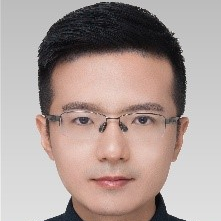Recent Advances in High-Performance Wireless Power Transfer Technologies
A special issue of Electronics (ISSN 2079-9292). This special issue belongs to the section "Microwave and Wireless Communications".
Deadline for manuscript submissions: 16 August 2024 | Viewed by 600
Special Issue Editors
Interests: capacitive power transfer; wireless power and signal transfer
Special Issues, Collections and Topics in MDPI journals
Interests: wireless power transfer
Special Issue Information
Dear Colleagues,
In scenarios where conventional wire-based power supply methods are impractical or challenging to implement, wireless power transfer (WPT) technology emerges as an effective alternative. The increasingly diverse power supply scenarios and electrical devices have imposed elevated performance demands on WPT systems. On the one hand, these systems are required to accommodate varying power levels under different coupling conditions while maintaining high efficiency and robustness. Simultaneously, they must conform to electromagnetic compatibility standards across various industries. On the other hand, WPT systems are also expected to encompass multiple auxiliary functions to enhance system performance and user experience. These functionalities may include in-band communication, foreign object detection, load recognition, etc. This Special Issue, titled "Recent Advances in High-Performance Wireless Power Transfer Technologies", focuses on the latest theoretical and applied research achievements in high-performance WPT technology. Original research articles and reviews are welcomed for this Special Issue. Research areas may include (but are not limited to) the following topics:
- Power semiconductor devices for WPT systems;
- Power converters for WPT systems;
- Loss modeling and analysis for WPT systems;
- MEPT (Maximum Efficiency Point Tracking) for WPT systems;
- Anti-misalignment techniques for WPT systems;
- Control techniques for WPT systems;
- Novel magnetic materials for WPT systems;
- Active/passive electromagnetic shielding techniques for WPT systems;
- Electromagnetic radiation and biological safety assessment for WPT systems;
- Simultaneous power and signal transfer techniques for WPT systems;
- Foreign object detection techniques for WPT systems;
- Interoperability of WPT systems;
- Novel coupling interfaces for WPT systems;
- Overview of key technologies of WPT systems;
- Overview of industrialization of WPT technologies.
We look forward to receiving your contributions.
Dr. Wei Zhou
Dr. Yang Chen
Dr. Zhijuan Liao
Guest Editors
Manuscript Submission Information
Manuscripts should be submitted online at www.mdpi.com by registering and logging in to this website. Once you are registered, click here to go to the submission form. Manuscripts can be submitted until the deadline. All submissions that pass pre-check are peer-reviewed. Accepted papers will be published continuously in the journal (as soon as accepted) and will be listed together on the special issue website. Research articles, review articles as well as short communications are invited. For planned papers, a title and short abstract (about 100 words) can be sent to the Editorial Office for announcement on this website.
Submitted manuscripts should not have been published previously, nor be under consideration for publication elsewhere (except conference proceedings papers). All manuscripts are thoroughly refereed through a single-blind peer-review process. A guide for authors and other relevant information for submission of manuscripts is available on the Instructions for Authors page. Electronics is an international peer-reviewed open access semimonthly journal published by MDPI.
Please visit the Instructions for Authors page before submitting a manuscript. The Article Processing Charge (APC) for publication in this open access journal is 2400 CHF (Swiss Francs). Submitted papers should be well formatted and use good English. Authors may use MDPI's English editing service prior to publication or during author revisions.
Keywords
- wireless power transfer
- high performance
- efficiency improvement
- robustness
- electromagnetic compatibility
- auxiliary functions







